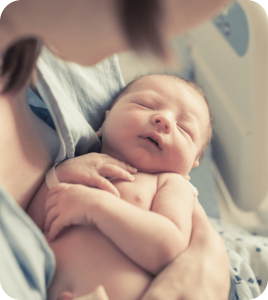Flying After Childbirth: What New Mothers Need to Know
Welcoming a newborn into the world is a life-changing experience, and for many new mothers, travel plans may be on the horizon. Whether visiting family, relocating, or simply taking a much-needed getaway, flying after childbirth comes with unique challenges. Understanding when and how to fly safely postpartum is essential for a smooth and comfortable journey.
Dr Kelly Hankins, a highly experienced obstetrician and gynaecologist in North Gosford, provides expert guidance on postpartum recovery and travel, helping new mothers navigate this transition with confidence. In this blog, we’ll explore when it’s safe to fly, tips for postpartum recovery and travel, and practical advice for flying after childbirth with a newborn. 
Knowing When to Fly After Childbirth
The exact timeframe for safely flying after childbirth mainly depends on the type of delivery and if there are postpartum complications.
Generally, mothers who have had a vaginal delivery can fly as early as 4-6 weeks postpartum, provided they are recovering well and have no complications. Recovering from a C-section, however, takes longer, and flying is usually advised after 6-8 weeks from childbirth, depending on the healing process. If there were any complications during childbirth, such as postpartum haemorrhage or preeclampsia, the recovery timeline may be extended.
Discussing Flying After Childbirth with Dr Hankins
Whether you have flown after childbirth previously or not, always consult with Dr Kelly Hankins first, as each pregnancy is different. Dr Hankins will discuss safety factors in more detail and confirm when it is safe for you to fly. However, meeting with Dr Hankins also gives you the opportunity to ask her questions, such as:
- Am I physically ready to fly based on my recovery progress?
- What precautions should I take to prevent complications like blood clots?
- Can I safely manage postpartum bleeding and discomfort while travelling?
- What travel restrictions, if any, should I be aware of?
Dr Hankins can offer personalised recommendations to ensure a safe and comfortable journey.
Postpartum Recovery and Travel
Flying after childbirth and during postpartum recovery requires some extra care and preparation. To ensure you have a comfortable flight, wear loose, breathable clothing and compression socks or stockings to support circulation. Drink plenty of water to prevent dehydration and reduce the risk of blood clots and walk around the cabin periodically to improve circulation, especially on longer flights. Don’t forget to pack essential postpartum care items in your carry-on bag, such as pads, pain relief medication, and comfortable seating support, and plan for some rest time during the flight, whether that’s to sleep or read a book as fatigue is common after childbirth.
Travelling with a Newborn
Flying with a newborn can be daunting, but proper preparation makes the experience smoother. Consider the following tips:
- Pack Wisely: Bring newborn travel essentials in your carry-on like diapers, wipes, extra clothes, a blanket, and a portable changing pad.
- Use a Baby Carrier: A baby carrier provides hands-free convenience and keeps your baby close and secure.
- Choose the Right Flight Time: Try and choose flights that align with your baby’s sleep schedule for a more peaceful journey.
- Understand Airport Security Procedures: TSA allows parents to carry formula, breast milk, and baby food in reasonable quantities, but be prepared for additional screening.
- Decide on a Seat Arrangement: Some airlines offer bassinets for long-haul flights; booking a seat with extra legroom can also help.
Breastfeeding While Flying
Many mothers worry about breastfeeding while flying, but with the right approach, it can be a seamless experience:
- Feed During Take-off and Landing: Nursing or offering a pacifier during take-off and landing can help relieve ear pressure for your baby.
- Use a Nursing Cover (if preferred): While breastfeeding is allowed on planes, a cover may provide privacy and comfort.
- Pump and Store Milk: If pumping, carry a portable breast pump and storage bags. Most airports offer lactation rooms for privacy.
- Stay Hydrated: Breastfeeding can be dehydrating, so drink plenty of fluids.
Safety Considerations for Air Travel
Postpartum mothers face specific health risks when flying, so it’s important to take extra precautions for safety. One of the biggest risks is the risk of blood clots due to prolonged sitting, mainly on longer flights. Wearing compression stockings, staying hydrated, and moving around the aircraft can help. If recovering from a C-section, there is a greater risk of infection, so ensure the incision is healing well before flying. Some airlines have specific rules regarding newborn travel, with age restriction varying from 2 days and 2 weeks. Check this with your airline beforehand.
Flying after childbirth can be a safe and enjoyable experience with the right preparation. By consulting with a healthcare provider like Dr Kelly Hankins, planning ahead, and prioritising postpartum recovery, new mothers can travel confidently with their newborns. Whether it’s a family visit or a relaxing getaway, informed decision-making ensures a smooth and stress-free journey.
For personalised advice on safe travel for new mothers, schedule a consultation with Dr Kelly Hankins today.